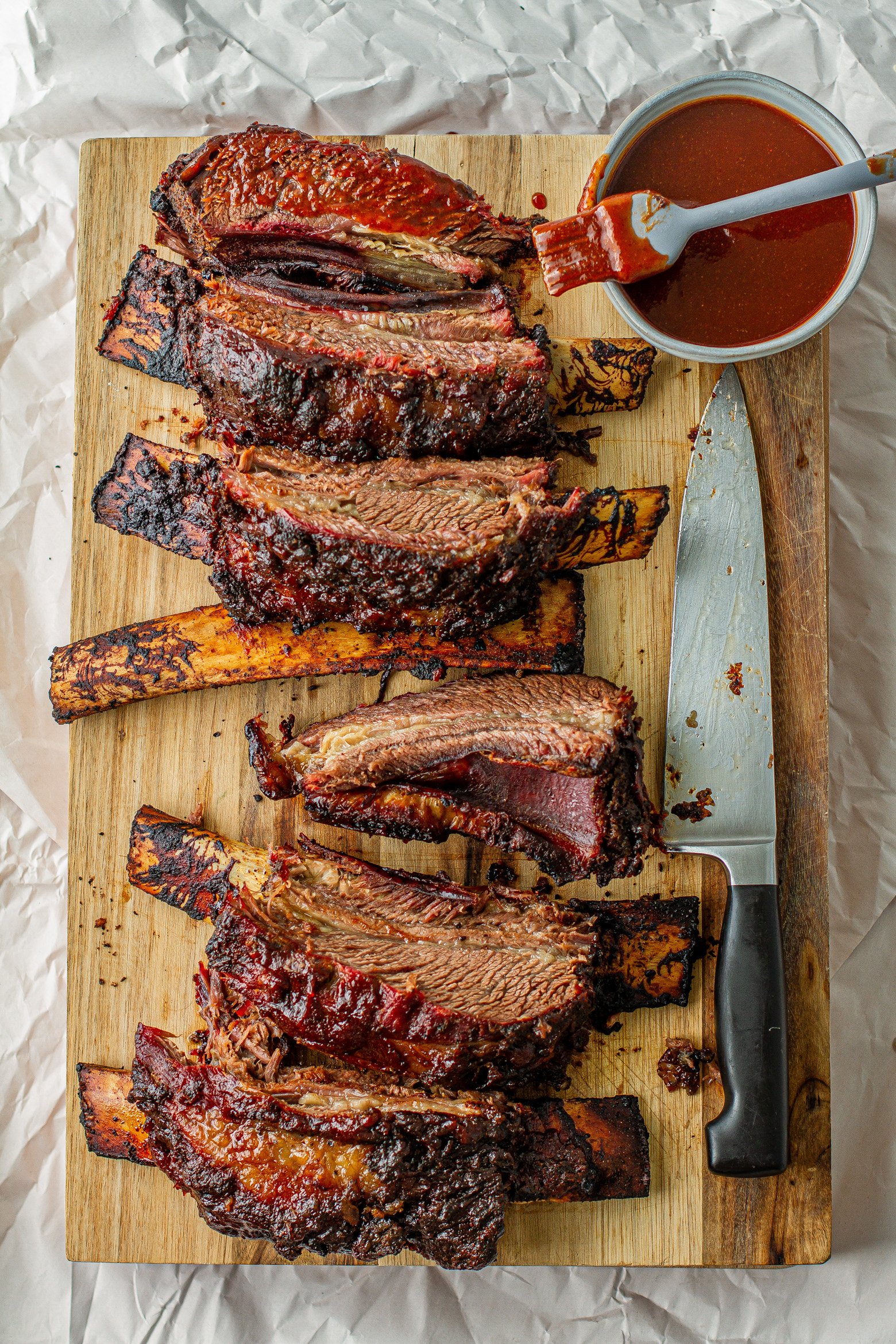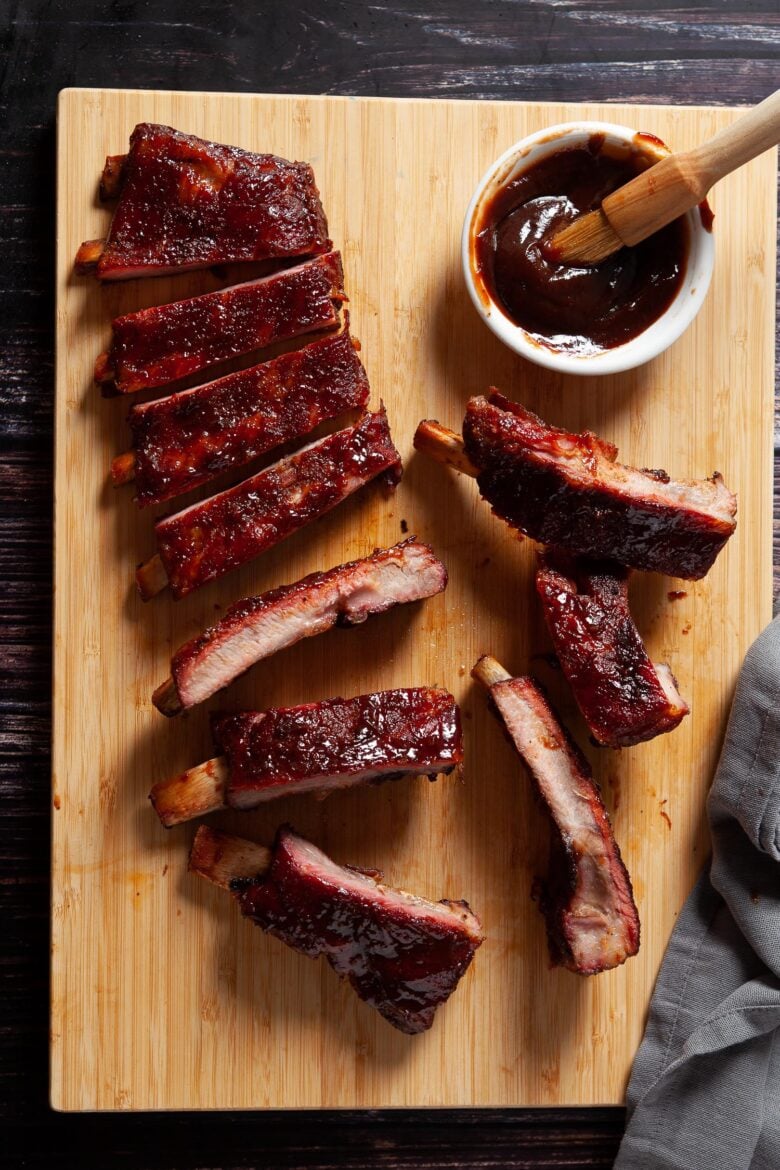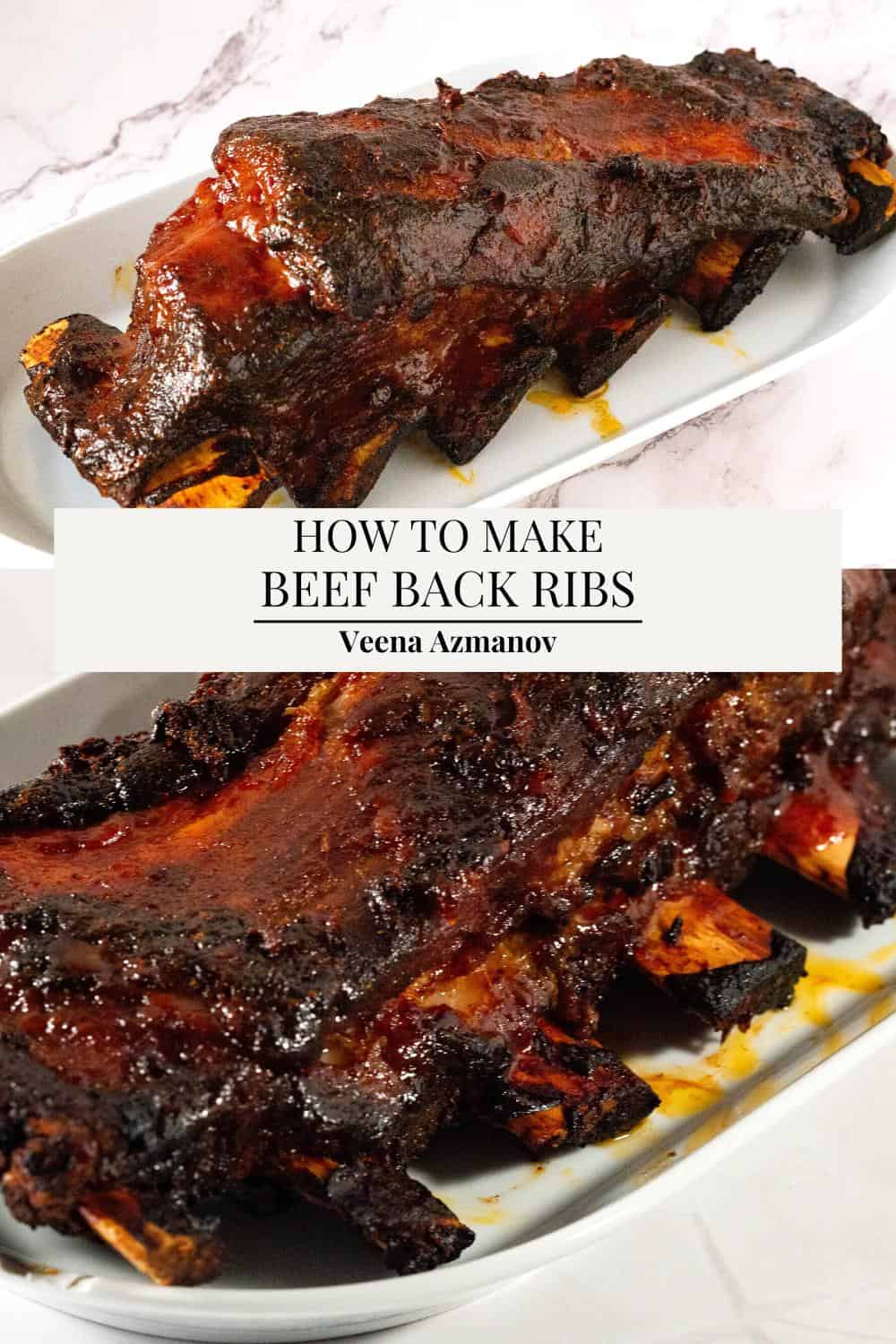Importance Of Allowing Ribs To Rest

Allowing ribs to rest after cooking is crucial for achieving optimal juiciness and flavor. Resting allows the juices within the meat to redistribute, resulting in a more tender and moist mouthful. This period of rest also helps to retain the natural flavors and aroma of the ribs, enhancing the overall taste experience. When ribs are served immediately after cooking, the juices have not had a chance to settle, leading to a less enjoyable eating experience. Therefore, taking the time to let ribs rest is an essential step in creating delicious and succulent ribs.
Importance Of Resting Ribs After Cooking
Resting ribs after cooking is essential for achieving optimal juiciness and flavor. During the cooking process, heat causes the muscle fibers in the ribs to contract and release moisture. Allowing the ribs to rest for about 10-15 minutes after cooking gives the fibers a chance to relax and reabsorb the juices, resulting in a more tender and flavorful bite. If ribs are served immediately after cooking, the juices may run out, leading to dry and less enjoyable meat. Taking the time to let ribs rest ensures a moist and delicious eating experience.
Benefits Of Allowing Ribs To Rest For Optimal Juiciness
Allowing ribs to rest after cooking offers several benefits that result in optimal juiciness. Firstly, resting allows the meat to retain its moisture by allowing the muscle fibers to relax and reabsorb the juices that were forced out during cooking. This results in tender, juicy meat that is a delight to bite into. Additionally, resting also helps distribute the juices evenly throughout the meat, enhancing flavor and ensuring each bite is delectable. By taking the time to let ribs rest, you can enjoy a succulent and flavorful eating experience.
Factors Affecting Resting Time

Factors affecting the resting time of ribs include the size and thickness of the cuts of meat. Thicker and larger cuts may require a longer resting time to allow the heat to distribute evenly and for the muscle fibers to relax. Another factor is personal preference in terms of the desired level of doneness and tenderness. Some individuals may prefer their ribs to be served immediately, while others may opt for a longer resting time to enhance the juiciness and tenderness. Ultimately, the resting time should be adjusted based on these factors to achieve the desired results.
Factors Affecting How Long Ribs Should Rest
The length of time that ribs should rest can be influenced by several factors. One important factor is the size and thickness of the ribs. Thicker and larger cuts of meat may require a longer resting period to allow the heat to distribute evenly and for the muscle fibers to relax. Another factor is personal preference. Some individuals may prefer their ribs to be served immediately, while others may opt for a longer resting time to enhance the juiciness and tenderness. Ultimately, the resting time should be adjusted based on these factors to achieve the desired results.
Ideal Resting Time For Different Types Of Ribs
The ideal resting time for different types of ribs can vary depending on the cut and cooking method. For baby back ribs, it is recommended to let them rest for about 10-15 minutes. This allows the juices to redistribute, resulting in a tender and flavorful meat. Spare ribs, on the other hand, may require a slightly longer resting time of 15-20 minutes. This extra time allows for the larger size and thickness of spare ribs to fully relax and achieve optimal juiciness. Overall, allowing ribs to rest before serving is essential for enhancing their taste and texture.
How Resting Enhances Juiciness And Flavor

Resting ribs after cooking is crucial for enhancing their juiciness and flavor. During the resting process, the meat fibers relax, allowing the juices that were forced out during cooking to redistribute throughout the meat. This results in a tender and moist texture. Additionally, resting allows the flavors to develop and meld together, intensifying the overall taste of the ribs. The resting time also gives the ribs a chance to cool down slightly, ensuring that the flavors are not masked by excessive heat. Overall, resting is essential for achieving optimal juiciness and flavor in ribs.
Effect Of Resting On Rib Texture And Tenderness
Resting ribs after cooking has a significant effect on their texture and tenderness. When ribs are cooked, the proteins in the meat contract and squeeze out the juices. However, when they are allowed to rest, the meat fibers relax and reabsorb the moisture that was forced out during cooking. This results in a more tender and succulent texture. The resting process also allows the connective tissues in the ribs to break down further, making them even more tender and easy to bite into. Overall, resting enhances the texture and tenderness of the ribs, providing a more enjoyable eating experience.
How Resting Enhances Flavor Development In Ribs
Resting ribs after cooking not only improves their texture and tenderness, but it also enhances the flavor development. When ribs are allowed to rest, the flavors have a chance to fully develop and meld together. The juices that are reabsorbed during the resting period bring back the rich, smoky flavors that were released during cooking. This allows for a more harmonious balance of flavors in every bite. The result is a juicier and more flavorful eating experience that truly showcases the deliciousness of the ribs. So, make sure to let your ribs rest to maximize their flavor potential.
Best Practices For Resting Ribs

To ensure optimal juiciness and flavor in your ribs, it is important to follow some best practices for resting. Firstly, cover the ribs loosely with aluminum foil to help retain moisture during the resting period. This prevents the ribs from drying out and allows them to continue cooking gently. Secondly, place the ribs in a warm area, such as an insulated cooler or a warm oven, to keep them at a safe temperature while resting. Lastly, avoid cutting into the ribs immediately after resting, as this can release the precious juices. Instead, wait until you’re ready to serve before slicing and enjoying the deliciousness of your perfectly rested ribs.
Best Practices For Resting Ribs To Retain Moisture
To retain moisture in your ribs during the resting period, it is important to follow some best practices. Firstly, cover the ribs loosely with aluminum foil to help trap in the moisture. This will prevent them from drying out while they rest. Secondly, place the ribs in a warm area, such as an insulated cooler or a warm oven, to maintain their temperature. This will help the meat retain its juiciness. Lastly, avoid cutting into the ribs immediately after resting, as this can cause the juices to escape. By following these practices, you can ensure that your ribs stay moist and delicious.
Tips For Ensuring Ribs Rest Properly
To ensure that ribs rest properly, it’s important to follow a few tips. Firstly, be sure to loosely cover the ribs with aluminum foil to trap in the moisture. This will help prevent them from drying out during the resting period. Secondly, place the ribs in a warm area, such as an insulated cooler or a warm oven, to maintain their temperature. This will help the meat retain its juiciness. Lastly, resist the temptation to cut into the ribs immediately after resting. Give them the proper resting time to allow the juices to redistribute and maximize flavor.
Serving And Presentation

When serving rested ribs, it’s important to consider the presentation to enhance the overall dining experience. One popular method is to brush on a glaze or barbecue sauce just before serving, adding a final layer of flavor and shine. To showcase the ribs, place them on a platter or cutting board and garnish with fresh herbs or sliced citrus fruits for a pop of color. Serving ribs with a side of coleslaw or cornbread can complement the smoky flavors. Remember to provide utensils and napkins for easy enjoyment, creating a visually appealing and delicious meal.
How To Properly Serve Rested Ribs
When serving rested ribs, it is important to consider the presentation to enhance the overall dining experience. One method is to brush on a glaze or barbecue sauce just before serving, adding a final layer of flavor and shine. Place the ribs on a platter or cutting board and garnish with fresh herbs or sliced citrus fruits for a pop of color. Serving ribs with a side of coleslaw or cornbread can complement the smoky flavors. Provide utensils and napkins for easy enjoyment, creating a visually appealing and delicious meal.
Tips For Presenting Rested Ribs For Optimal Enjoyment
When presenting rested ribs for optimal enjoyment, there are a few tips to keep in mind. Firstly, consider brushing on a glaze or barbecue sauce just before serving to add a final layer of flavor and shine. Place the ribs on a platter or cutting board and garnish with fresh herbs or sliced citrus fruits to add a pop of color and freshness. Serve the ribs alongside complementary sides like coleslaw or cornbread to enhance the overall meal. Lastly, provide utensils and napkins for easy enjoyment, ensuring that your guests can dig in and savor every delicious bite.
Conclusion

In conclusion, allowing ribs to rest after cooking is an essential step for achieving optimal juiciness and flavor. By giving the ribs time to cool and redistribute their juices, you can ensure a tender and satisfying eating experience. Factors such as the type of ribs and personal preference may affect the exact resting time, but generally, letting the ribs sit for around 10-15 minutes is recommended. Remember to brush on a glaze or barbecue sauce before serving, garnish with fresh herbs or citrus fruits, and pair with tasty sides to enhance the overall enjoyment of the meal. With these tips, you can present rested ribs that will impress your guests and leave them craving for more.
Summary Of The Importance Of Letting Ribs Rest
Allowing ribs to rest after cooking is crucial for maximizing their flavor and tenderness. By giving the meat time to reabsorb its juices, the ribs become moist and succulent, providing a satisfying eating experience. Additionally, resting allows the meat to relax, making it easier to pull apart and enhancing its tenderness. Whether you’re grilling or smoking ribs, taking the time to let them rest ensures that you achieve the best possible results. So, resist the temptation to dig in immediately and give your ribs the rest they deserve for optimal juiciness and flavor.
Final Thoughts On Enhancing Juiciness And Flavor Through Proper Resting
Proper resting is the key to enhancing the juiciness and flavor of your ribs. By allowing the meat to rest, it has the opportunity to reabsorb its juices, resulting in a moist and succulent texture. Additionally, the relaxation of the meat during resting improves its tenderness, making it easier to pull apart and enjoy. Remember, the ideal resting time may vary depending on factors such as the size of the ribs and personal preference. So, take the time to let your ribs rest and experience the mouthwatering difference it makes.
FAQ About How Long To Let Ribs Rest: Allowing Ribs To Rest For Optimal Juiciness And Flavor
Q: Why is it important to let ribs rest after cooking?
A: Allowing ribs to rest after cooking is crucial as it helps the juices redistribute within the meat, resulting in enhanced tenderness and juiciness.
Q: How long should ribs rest before serving?
A: It is recommended to let ribs rest for about 10-20 minutes before serving to ensure the best texture and flavor.
Q: Can I cover the ribs while they are resting?
A: Yes, covering the ribs loosely with foil or a clean kitchen towel during the resting period can help retain heat and moisture, keeping the ribs warm without overcooking.
Q: What happens if I don’t let the ribs rest?
A: Failing to let the ribs rest can lead to the juices escaping rapidly when cut, resulting in drier and less flavorful meat.
Q: Should I rest ribs cooked on a grill differently than those cooked in the oven?
A: The resting process is similar regardless of cooking method. Both grilled and oven-cooked ribs benefit from a rest period to allow the flavors to develop and the juices to redistribute evenly.

Johnny Knuckles Knock-out BBQ is a culinary haven for barbecue enthusiasts, offering a fusion of traditional BBQ and tantalizing street fare. Our secret to delivering mouthwatering dishes lies in our meticulous preparation process. Each cut of meat is lovingly hand-rubbed and slow-smoked over 100% hardwood, creating a symphony of flavors that will leave your taste buds dancing. Whether planning a special event or simply craving an unforgettable meal, Johnny Knuckles Knock-out BBQ is here to elevate your dining experience. Our catering services are designed to bring the sizzle and aroma of our delectable BBQ to your event, ensuring that every guest leaves with a full belly and a smile.